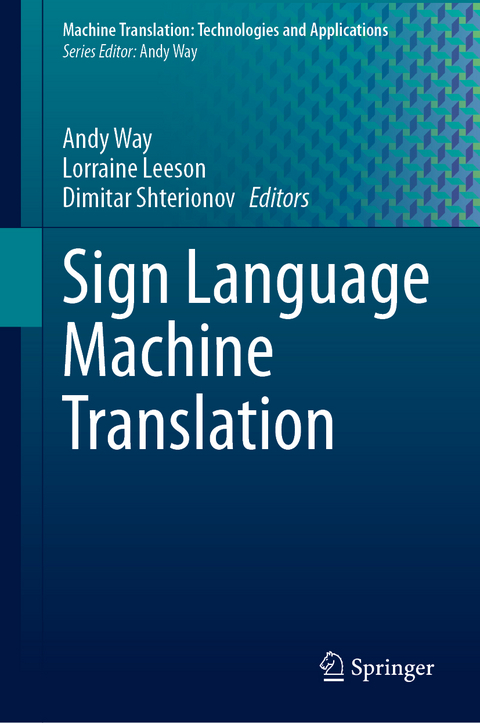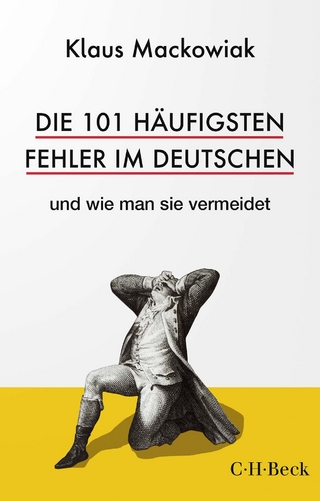
Sign Language Machine Translation
Springer International Publishing (Verlag)
978-3-031-47361-6 (ISBN)
This book, for the first time, collects important current topics in the area of sign language translation in a single volume. The topic is introduced more generally to benefit newcomers to the field before diving into the current state-of-the-art methods of Sign Language Machine Translation (SLMT), together with an in-depth description of issues specific to this topic, including: an introduction to and historical overview of SLMT; ethical issues related to the engagement of and with deaf users; the importance of data; the sign languages of Europe; sign language recognition and synthesis, including via avatars; data-driven and linguistically-informed models of SLMT; gloss translation; fingerspelling; SLMT communication; and SLMT in practice.
Of interest to MT developers and users as well as people working in deaf studies, this volume presents cutting-edge research on machine translation in the field of deaf studies.
lt;p>Andy Way obtained a B.Sc. (Hons) in 1986, an M.Sc. in 1989, and his PhD in 2001 from the University of Essex, Colchester, U.K. From 1988-91 he worked at the University of Essex, U.K., on the Eurotra MT project. He joined DCU in 1991, and is employed as Full Professor. He was the recipient of the 2015 DCU President's Research Award for Science and Engineering, and in 2019, received the extremely prestigious Award of Honour from the International Association for Machine Translation for his services to the community. Prof. Way co-founded the SFI-funded Centre CNGL in 2007, and the ADAPT Centre in 2015. He took a career break from 2011- 2013 to work in the translation industry in the UK. On his return to DCU in Jan. 2014, Prof. Way acted as Deputy Director of CNGL, and subsequently Deputy Director and Co-Applicant of ADAPT, the EUR100 million SFI-funded Centre for Digital Content Technology. Prof. Way has been lead researcher on thirteen EU projects, including two current projects coordinated by him. Prof. Way served as President of the European Association for Machine Translation from 2009-2015, and was President of the International Association for Machine Translation from 2011-13. He has been Editor of the Machine Translation journal since 2007. He is currently editing a series of books for Springer in the area of Machine Translation, with four already published. Andy has a h-index of 49, and over 9,500 citations of his work.
Lorraine Leeson holds a Dip. Deaf Studies (interpreting), M.Phil Linguistics, PhD. Linguistics. Cert. Gender Studies. She is Professor in Deaf Studies at the Centre for Deaf Studies, School of Linguistics, Speech and Communication Sciences and Associate Dean of Research (Research Integrity) for Trinity College Dublin (2018-present). Prof Leeson has worked with Deaf communities in a range of capacities since 1990. She served as inaugural Director of the Centre for Deaf Studies at Trinity College Dublin from 2001-17. Her research work is multidisciplinary in nature. Her doctoral work was the first to examine aspects of the morphosyntax of Irish Sign Language, and subsequent to this, she has published widely on aspects of the grammar of Irish Sign Language, as well as on applied linguistics topics, including a significant body of work on sign language interpreting (16 books, 58 papers, 13 edited volumes (journals/monographs) and 100+ peer-reviewed conference papers. She was named a European Commission European Language Ambassador for her work on sign languages in 2008. Lorraine was a member of the first cohort of professionally trained Irish Sign Language/English interpreters in Ireland, and she continues to interpret. She has engaged in pan-European research work with academic institutions, Deaf communities and interpreting organisations since 1990, serving as Chair of the European Forum of Sign Language Interpreters Committee of Experts (2013-2019). She is a member of the Royal Irish Academy's Committee on Languages, Literatures and Cultures (LLC) (2018-present). Lorraine has a h-index of 22, and over 1,850 citations of her work.
Dimitar Shterionov is Assistant Professor in the School of Humanities and Digital Sciences, Department Cognitive Science and Artificial Intelligence, in Tilburg University, The Netherlands. He is an experienced researcher in MT and NLP, an expert in a plethora of subtopics of MT such as low-resource MT, quality estimation, automatic post-editing, evaluation of MT quality and usability, speech-to-text and text-to-speech translation, etc. He also has experience with user-centred development of software solutions, as well as cloud-based solutions to MT (e.g., at KantanMT). Dimitar obtained a PhD in computer science engineering from KU Leuven in 2015 on the topic of Probabilistic Logic and Learning. After that he moved to industry and joined KantanMT to work on their cloud-based customizable statistical MT system. In 2016, he was appointed he
Chapter 1. The Pipeline of Sign Language Machine.- Chapter 2. How it Started and How it's Going: Sign-Language Machine Translation and Engagement with Deaf Communities over the past 25 years.- Chapter 3. The Importance of Including Signed Languages in Natural Language Processing.- Chapter 4. Sign Languages and Machine Translation: Challenges and Opportunities.- Chapter 5. Challenges with Sign Language Datasets.- Chapter 6. Language Resources for European Sign Languages.* Chapter 7. Sign languages as source language for machine translation: historical overview and challenges.- Chapter 8. Linguistic Processing for Sign Language Translation.- Chapter 9. Improving Sign Language Gloss Translation with Low-Resource Machine Translation Techniques.- Chapter 10. Sign Language Synthesis: Current Signing Avatar Systems and Representation.- Chapter 11. A Real-Time Collision Detection and Avoidance Algorithm for Fingerspelling Animation.- Chapter 12. Bridging the Gap: Understanding the Intersection of Deaf and Technical Perspectives on Signing Avatars.- Chapter 13. Sign Language Machine Translation Communication and Engagement. Chapter 14. (Towards) Sign Language Machine Translation in
Practice.
| Erscheinungsdatum | 19.05.2024 |
|---|---|
| Reihe/Serie | Machine Translation: Technologies and Applications |
| Zusatzinfo | XXI, 348 p. 74 illus., 40 illus. in color. |
| Verlagsort | Cham |
| Sprache | englisch |
| Maße | 155 x 235 mm |
| Themenwelt | Geisteswissenschaften ► Sprach- / Literaturwissenschaft ► Sprachwissenschaft |
| Schlagworte | Artificial Intelligence • Computational Linguistics • Deaf Studies • machine learning • Natural Language Processing • Sign Language Translation • Technology in education |
| ISBN-10 | 3-031-47361-2 / 3031473612 |
| ISBN-13 | 978-3-031-47361-6 / 9783031473616 |
| Zustand | Neuware |
| Informationen gemäß Produktsicherheitsverordnung (GPSR) | |
| Haben Sie eine Frage zum Produkt? |
aus dem Bereich


